
- Home
- Brand
- Certification
- Country
- Manufacturer
- Theme
- Type
- Action Figure (64)
- Armor (29)
- Badge (14)
- Boot (27)
- Carburetor (196)
- Complete Carburetor (27)
- Complete Carburettor (33)
- Helmet (23)
- Jacket (19)
- Manifold (14)
- Medal (15)
- Military -- Aviation (15)
- Model Kit (12)
- Rc Tank (40)
- Tactical Vest (18)
- Tank (45)
- Throttle Body (47)
- Twin Carburetors (44)
- Twin Carburetors Kit (37)
- Wristwatch (53)
- Other (3319)
1951 Jewish IDF Military HAGGADAH Hebrew ISRAEL INDEPENDENCE Passover JUDAICA
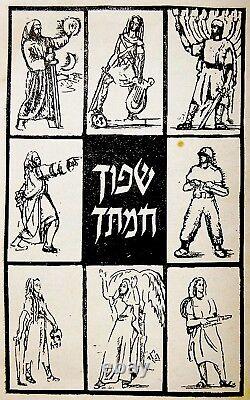
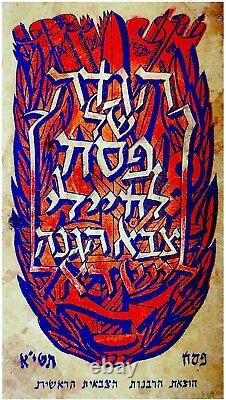
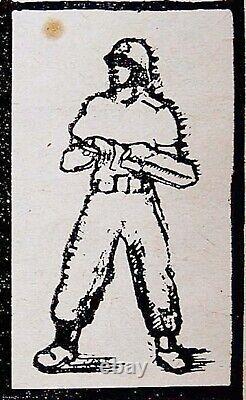
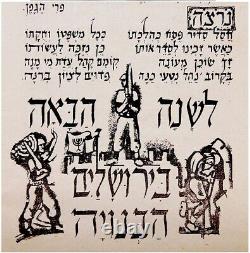
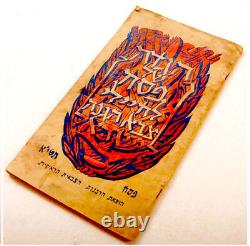
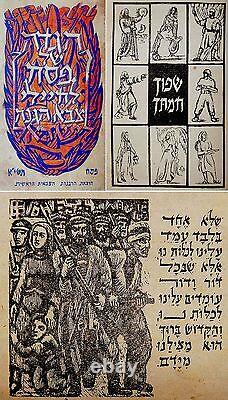
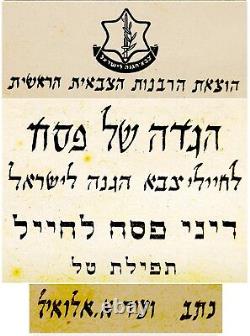
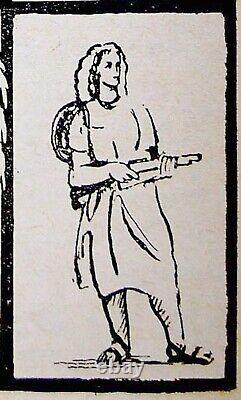
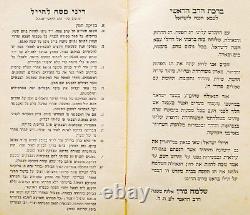
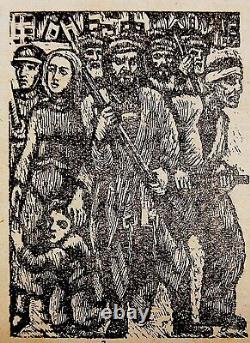
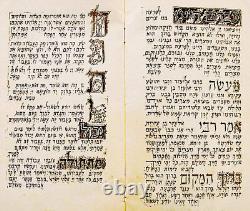
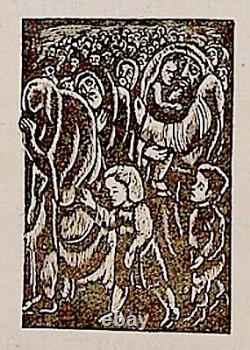
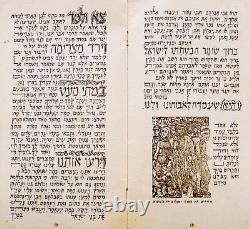
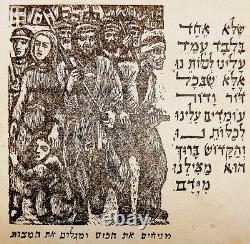
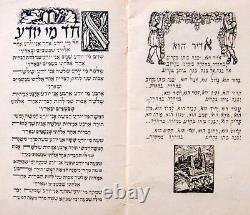
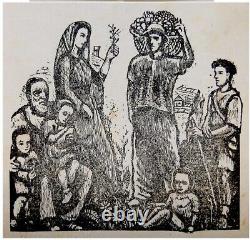
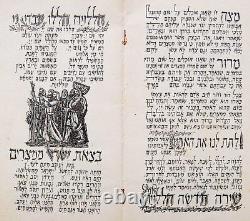
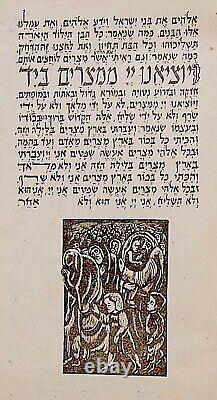


The HAGGADAH was created and published almost 70 years ago, in 1951, Only 2 years after the establishment of the INDEPENDENT STATE of ISRAEL and its WAR of INDEPENDENCE. Unlike the 1st somewhat improvised IDF HAGGADAH. More means and time were available to create a brand new HAGGADAH and thus, The IDF Department of RELIGEOUS SERVICES has commissioned the gifted artist ARIEH ALLWEIL to cvreate this breath taking Haggadah which is throughout illustrated and decorated with charming vignettes, Linocuts and woodcuts and beautiful calligraphy where the text is traditional but each of the smaller or bigger illustrations relates to the actual historical events : The HOLOCAUST, The 1948 WAR of INDEPENDENCE, The establishment of the INDEPENDENT STATE of ISRAEL, The establishment of the IDF etc. Very detailed rules and regulations for the HEBREW JEWISH SOLDIER regarding celebrating the PESSACH in the CAMP and FIELD are also enclosed, Together with the inevitable blessing of the Chief IDF Rabbi, Shlomo Goren, A blessing which is still in the festive spirit of the NEWLY BORN STATE, Spirit of FREEDOM, LIBERTY and the FIGHT for INDEPENDENCE. Used in military Sedder ceremonies.
Quite a few Sedder wine stains. (Pls look at scan for accurate AS IS images) Will be sent inside a protective packaging.
AUTHENTICITY : This is an the ORIGINAL vintage 1951. IDF HAGGADAH SHEL PASSOVER created in ERETZ ISRAEL, NOT a reproduction, Immitation or a reprint , It holds a life long GUARANTEE for its AUTHENTICITY and ORIGINALITY. Will be sent protected inside a protective rigid packaging.
Arieh Allweil, painter, born 1901, Galicia. Published series of linoleum cuts of Israeli and Biblical subjects, also illustrated a Passover Haggada and large scale murals of the Holocaust. From 1952 until his death lived in Tel Aviv, and in Safed in summer. Education 1921-25 Art Academy, Vienna, Austria Teaching Herzliyah Gymnasium High-School, Israel, art. Tel Aviv High School Awards And Prizes 1938 Dizengoff Prize for Painting and Sculpture 1955 Turov Prize for Bible Illustrations The Haggadah (Hebrew:????????? , "telling"; plural: Haggadot) is a Jewish text that sets forth the order of the Passover Seder. Reading the Haggadah at the Seder table is a fulfillment of the Scriptural commandment to each Jew to "tell your son" of the Jewish liberation from slavery in Egypt as described in the Book of Exodus in the Torah And thou shalt tell thy son in that day, saying: It is because of that which the LORD did for me when I came forth out of Egypt.Sephardi and Mizrahi Jews also apply the term Haggadah to the service itself, as it constitutes the act of telling your son. Contents [hide] 1 Passover Seder according to the Haggadah 1.1 Kadeish (blessings and the first cup of wine) 1.2 Ur'chatz (wash hands) 1.3 Karpas (appetizer) 1.4 Yachatz (breaking of the middle matzah) 1.5 Magid (relating the Exodus) 1.6 Rohtzah (ritual washing of hands) 1.7 Motzi Matzah (blessings over the Matzah) 1.8 Maror (bitter herbs) 1.9 Koreich (sandwich) 1.10 Shulchan Orech (the meal) 1.11 Tzafun (eating of the afikoman) 1.12 Bareich (Grace after Meals) 1.13 Hallel (songs of praise) 1.14 Nirtzah 2 Authorship 3 History 4 Illuminated manuscripts 5 See also 6 Notes 7 References 8 Bibliography 9 External links Passover Seder according to the Haggadah[edit] Main article: Passover Seder Kadeish (blessings and the first cup of wine)[edit] Kadeish is Hebrew Imperative for Kiddush. This Kiddush is similar to that which is recited on all of the pilgrimage festivals, but also refers to matzot and the exodus from Egypt. Acting in a way that shows freedom and majesty, many Jews have the custom of filling each other's cups at the Seder table.
The Kiddush is traditionally said by the father of the house, but all Seder participants participate by reciting the Kiddush and drinking at least a majority of a cup of wine. Ur'chatz (wash hands)[edit] Technically, according to Jewish law, whenever one partakes of fruits or vegetables dipped in liquid while remaining wet, one must wash one's hands, if the fruit or vegetable remains wet. However, other times of the year either one has already washed one's hands before eating bread, or dry the fruit or vegetable, in which case, one need not wash one's hands before eating the fruit or vegetable.
According to most traditions, no blessing is recited at this point in the Seder, unlike the blessing recited over the washing of the hands before eating bread. However, followers of Rambam or the Gaon of Vilna do recite a blessing. Karpas (appetizer)[edit] Each participant dips a vegetable into either salt water (Ashkenazi custom; said to serve as a reminder of the tears shed by their enslaved ancestors), vinegar(Sephardi custom) or charoset (older Sephardi custom; still common among Yemenite Jews). Another custom mentioned in some Ashkenazi sources and probably originating with Meir of Rothenburg, [citation needed] was to dip the karpas in wine. Yachatz (breaking of the middle matzah)[edit] Three matzot are stacked on the seder table; at this stage, the middle matzah of the three is broken in half.
The larger piece is hidden, to be used later as the afikoman, the "dessert" after the meal. Magid (relating the Exodus)[edit] The story of Passover, and the change from slavery to freedom is told. At this point in the Seder, Moroccan Jews have a custom of raising the Seder plate over the heads of all those present while chanting "Bivhilu yatzanu mimitzrayim, halahma anya b'nei horin" (In haste we went out of Egypt [with our] bread of affliction, [now we are] free people).
Ha Lachma Anya (invitation to the Seder) Main article: Ha Lachma Anya A bronze matzo plate designed by Maurice Ascalon, inscribed with the opening words of Ha Lachma Anya The matzot are uncovered, and referred to as the "bread of affliction". Participants declare (in Aramaic) an invitation to all who are hungry or needy to join in the Seder.
Halakha requires that this invitation be repeated in the native language of the country. Mah Nishtanah (The Four Questions) Main article: the four questions The Mishna details questions one is obligated to ask on the night of the seder. It is customary for the youngest child present to recite the four questions. In some families, this means that the requirement remains on an adult "child" until a grandchild of the family receives sufficient Jewish education to take on the responsibility. If a person has no children capable of asking, the responsibility falls to the spouse, or another participant.
[2] The need to ask is so great that even if a person is alone at the seder he is obligated to ask himself and to answer his own questions. [2] Ma nishtana ha lyla ha zeh mikkol hallaylot? Why is this night different from all other nights? Shebb'khol hallelot anu okh'lin? Amets umatsa, vehallayla hazze kullo matsa.
Why is it that on all other nights during the year we eat either leavened bread or matza, but on this night we eat only matza? Shebb'khol hallelot anu okh'lin sh'ar y'rakot, vehallayla hazze maror. Why is it that on all other nights we eat all kinds of vegetables, but on this night we eat bitter herbs?
Why is it that on all other nights we do not dip [our food] even once, but on this night we dip them twice? Shebb'khol hallelot anu okh'lin ben yosh'vin uven m'subbin, vehallayla hazze kullanu m'subbin. Why is it that on all other nights we dine either sitting upright or reclining, but on this night we all recline? A fifth question which is present in the mishnah has been removed by later authorities due to its inapplicability after the Destruction of the Temple: 5. Shebb'khol hallelot anu okh'lin basar tsali shaluk umvushal, vehallayla hazze kullo tsali. Why is it that on all other nights we eat meat either roasted, marinated, or cooked, but on this night it is entirely roasted? The four questions have been translated into over 300 languages. [3] We eat only matzah because our ancestors could not wait for their breads to rise when they were fleeing slavery in Egypt, and so they were flat when they came out of the oven.We eat only Maror, a bitter herb, to remind us of the bitterness of slavery that our ancestors endured while in Egypt. The first dip, green vegetables in salt water, symbolizes the replacing of our tears with gratitude, and the second dip, Maror in Charoses, symbolizes the sweetening of our burden of bitterness and suffering. We recline at the Seder table because in ancient times, a person who reclined at a meal was a free person, while slaves and servants stood.
We eat only roasted meat because that is how the Pesach/Passover lamb is prepared during sacrifice in the Temple at Jerusalem. The Four Sons The traditional Haggadah speaks of "four sons"-one who is wise, one who is wicked, one who is simple, and one who does not know to ask. This is based upon the rabbis of the Jerusalem Talmud finding four references in the Torah to responding to your son who asks a question. [4] Each of these sons phrases his question about the seder in a different way.
The wise son asks What are the statutes, the testimonies, and the laws that God has commanded you to do? One explanation for why this very detailed-oriented question is categorized as wise, is that the wise son is trying to learn how to carry out the seder, rather than asking for someone else's understanding of its meaning. He is answered fully: You should reply to him with [all] the laws of pesach: one may not eat any dessert after the paschal sacrifice. The wicked son, who asks, What is this service to you?
, is characterized by the Haggadah as isolating himself from the Jewish people, standing by objectively and watching their behavior rather than participating. Therefore, he is rebuked by the explanation that It is because God acted for my sake when I left Egypt. This implies that the Seder is not for the wicked son because the wicked son would not have deserved to be freed from Egyptian slavery. Where the four sons are illustrated in the Haggadah, this son has frequently been depicted as carrying weapons or wearing stylish contemporary fashions.The simple son, who asks, What is this? " is answered with "With a strong hand the Almighty led us out from Egypt, from the house of bondage. " And the one who does not know to ask is told, "It is because of what the Almighty did for me when I left Egypt.
" Some modern Haggadahs mention "children" instead of "sons, and some have added a fifth child. The fifth child can represent the children of the Shoah who did not survive to ask a question[5] or represent Jews who have drifted so far from Jewish life that they do not participate in a Seder.[6] For the former, tradition is to say that for that child we ask Why? And, like the simple child, we have no answer. "Go and learn" Four verses in Deuteronomy (26:5-8) are then expounded, with an elaborate, traditional commentary. And thou shalt speak and say before the LORD thy God:'A wandering Aramean was my parent, and they went down into Egypt, and sojourned there, few in number; and became there a nation, great, mighty, and populous. And the Egyptians dealt ill with us, and afflicted us, and laid upon us hard bondage.
And we cried unto the LORD, the God of our parents, and the LORD heard our voice, and saw our affliction, and our toil, and our oppression. 8 And the LORD brought us forth out of Egypt with a strong hand and an outstretched arm, and with great terribleness, and with signs, and with wonders. The Haggadah explores the meaning of those verses, and embellishes the story. This telling describes the slavery of the Jewish people and their miraculous salvation by God. This culminates in an enumeration of the Ten Plagues: Dam (blood)-All the water was changed to blood Tzefardeyah (frogs)-An infestation of frogs sprang up in Egypt Kinim (lice)-The Egyptians were afflicted by lice Arov (wild animals)-An infestation of wild animals (some say flies) sprang up in Egypt Dever (pestilence)-A plague killed off the Egyptian livestock Sh'chin (boils)-An epidemic of boils afflicted the Egyptians Barad (hail)-Hail rained from the sky Arbeh (locusts)-Locusts swarmed over Egypt Choshech (darkness)-Egypt was covered in darkness Makkat Bechorot (killing of the first-born)-All the first-born sons of the Egyptians were slain by God With the recital of the Ten Plagues, each participant removes a drop of wine from his or her cup using a fingertip.
Although this night is one of salvation, the sages explain that one cannot be completely joyous when some of God's creatures had to suffer. A mnemonic acronym for the plagues is also introduced: "D'tzach Adash B'achav", while similarly spilling a drop of wine for each word. At this part in the Seder, songs of praise are sung, including the song Dayenu, which proclaims that had God performed any single one of the many deeds performed for the Jewish people, it would have been enough to obligate us to give thanks. After this is a declaration (mandated by Rabban Gamliel) of the reasons of the commandments of the Paschal lamb, Matzah, and Maror, with scriptural sources.Then follows a short prayer, and the recital of the first two psalms of Hallel (which will be concluded after the meal). A long blessing is recited, and the second cup of wine is drunk. Motzi Matzah (blessings over the Matzah)[edit] Two blessings are recited. First one recites the standard blessing before eating bread, which includes the words "who brings forth" (motzi in Hebrew). [7] Then one recites the blessing regarding the commandment to eat Matzah.
An olive-size piece (some say two) is then eaten while reclining. Maror (bitter herbs)[edit] The blessing for the eating of the maror (bitter herbs) is recited and then it is dipped into the charoset and eaten. [7] Koreich (sandwich)[edit] The maror (bitter herb) is placed between two small pieces of matzo, similarly to how the contents of a sandwich are placed between two slices of bread, and eaten. This follows the tradition of Hillel, who did the same at his Seder table 2,000 years ago except that in Hillel's day the Paschal sacrifice, matzo, and maror were eaten together. Shulchan Orech (the meal)[edit] A Seder table setting The festive meal is eaten.Traditionally it begins with the charred egg on the Seder plate. [8] Tzafun (eating of the afikoman)[edit] Main article: Afikoman The afikoman, which was hidden earlier in the Seder, is traditionally the last morsel of food eaten by participants in the Seder.
Each participant receives an at least olive-sized portion of matzo to be eaten as afikoman. After the consumption of the afikoman, traditionally, no other food may be eaten for the rest of the night. Additionally, no intoxicating beverages may be consumed, with the exception of the remaining two cups of wine.
Bareich (Grace after Meals)[edit] The recital of Birkat Hamazon. Kos Shlishi (the Third Cup of Wine) The drinking of the Third Cup of Wine. Note: The Third Cup is customarily poured before the Grace after Meals is recited because the Third Cup also serves as a Cup of Blessing associated with the Grace after Meals on special occasions.Kos shel Eliyahu ha-Navi (cup of Elijah the Prophet) In many traditions, the front door of the house is opened at this point. Psalms 79:6-7 is recited in both Ashkenazi and Sephardi traditions, plus Lamentations 3:66 among Ashkenazim. Most Ashkenazim have the custom to fill a fifth cup at this point.
This relates to a Talmudic discussion that concerns the number of cups that are supposed to be drunk. Given that the four cups are in reference to the four expressions of redemption in Exodus 6:6-7, some rabbis felt that it was important to include a fifth cup for the fifth expression of redemption in Exodus 6:8.
All agreed that five cups should be poured but the question as to whether or not the fifth should be drunk, given that the fifth expression of redemption concerned being brought into the Land of Israel, which - by this stage - was no longer possessed of an autonomous Jewish community, remained insoluble. The rabbis determined that the matter should be left until Elijah (in reference to the notion that Elijah's arrival would precipitate the coming of the Messiah, at which time all halakhic questions will be resolved) and the fifth cup came to be known as the Kos shel Eliyahu ("Cup of Elijah"). Over time, people came to relate this cup to the notion that Elijah will visit each home on Seder night as a foreshadowing of his future arrival at the end of the days, when he will come to announce the coming of the Jewish Messiah.
In the late 1980s, Jewish feminists introduced the idea of placing a "Cup of Miriam" filled with water (to represent the well that existed as long as Miriam, Moses' sister, was alive in the desert) beside the Cup of Elijah. Many liberal Jews now include this ritual at their seders as a symbol of inclusion. [9] Hallel (songs of praise)[edit] The entire order of Hallel which is usually recited in the synagogue on Jewish holidays is also recited at the Seder table, albeit sitting down.
The first two psalms, 113and 114, were recited before the meal. The remaining psalms 115-118, are recited at this point. Psalm 136 (the Great Hallel) is then recited, followed by Nishmat, a portion of the morning service for Shabbat and festivals. There are a number of opinions concerning the paragraph Yehalelukha which normally follows Hallel, and Yishtabakh, which normally follows Nishmat. Most Ashkenazim recite Yehalelukha immediately following the Hallel proper, i.
At the end of Psalm 118, except for the concluding words. After Nishmat, they recite Yishtabakh in its entirety. Sephardim recite'Yehalelukha alone after Nishmat. Afterwards the Fourth Cup of Wine is drunk and a brief Grace for the "fruit of the vine" is said. Nirtzah[edit] Main article: Passover songs The Seder concludes with a prayer that the night's service be accepted.
A hope for the Messiah is expressed: L'Shana Haba'ah b'Yerushalayim! - Next year in Jerusalem! " Jews in Israel, and especially those in Jerusalem, recite instead "L'shanah haba'ah b'Yerushalayim hab'nuyah! - Next year in the rebuilt Jerusalem!
Although the 15 orders of the Seder have been complete, the Haggadah concludes with additional songs which further recount the miracles that occurred on this night in Ancient Egypt as well as throughout history. Some songs express a prayer that the Beit Hamikdash will soon be rebuilt.The last song to be sung is Chad Gadya ("One Kid Goat"). This seemingly childish song about different animals and people who attempted to punish others for their crimes and were in turn punished themselves, was interpreted by the Vilna Gaon as an allegory to the retribution God will levy over the enemies of the Jewish people at the end of days. Following the Seder, those who are still awake may recite the Song of Songs, engage in Torah learning, or continue talking about the events of the Exodus until sleep overtakes them. Authorship[edit] According to Jewish tradition, the Haggadah was compiled during the Mishnaic and Talmudic periods, although the exact date is unknown. It could not have been written earlier than the time of Rabbi Yehudah bar Elaay (circa 170 CE) who is the last tanna to be quoted therein.
According to most Talmudic commentaries Rav and Shmuelargued on the compilation of the Haggadah, [note 1] and hence it had not been completed as of then. Based on a Talmudic statement, it was completed by the time of Rav Nachman (mentioned in Pesachim 116a).There is a dispute, however, to which Rav Nachman, the Talmud was referring: According to some commentators, this was Rav Nachman bar Yaakov[note 2] (circa 280 CE), while others maintain this was Rav Nachman bar Yitzchak (360 CE). [note 3] However the Malbim, [10] along with a minority of commentators, believe that Rav and Shmuel were not arguing on its compilation, but rather on its interpretation, and hence was completed before then. According to this explanation; the Haggadah was written during the lifetime of Rabbi Yehudah HaNasi, [note 4] the compiler of the Mishna. The Malbim theorizes that the Haggadah was written by Rav Yehudah HaNasi himself.
History[edit] This section needs additional citations for verification. Please help improve this article by adding citations to reliable sources. Unsourced material may be challenged and removed. (March 2015) (Learn how and when to remove this template message) One of the most ancient parts is the recital of the "Hallel, " which, according to the Mishnah Pes.
7, was sung at the sacrifice in the Temple in Jerusalem, and of which, according to the school of Shammai, only the first chapter shall be recited. After the Psalms a benediction for the Redemption is to be said. This benediction, according to R. Tarfon, runs as follows: Praised art Thou, O Lord, King of the Universe, who hast redeemed us, and hast redeemed our fathers from Egypt." Another part of the oldest ritual, as is recorded in the Mishnah, is the conclusion of the "Hallel up to Ps. , and the closing benediction of the hymn "Birkat ha-Shir, " which latter the Amoraim explain differently Pes. 116a, but which evidently was similar to the benediction thanking God, "who loves the songs of praise, " used in the present ritual. These benedictions, and the narrations of Israel's history in Egypt, based on Deut.
2-4, with some introductory remarks, were added in the time of the early Amoraim, in the third century CE. In post-Talmudic times, during the era of the Geonim, selections from midrashim were added; most likely Rabbi Amram Gaon c. 850 was the originator of the present collection, as he was the redactor of the daily liturgy in the siddur. Of these midrashim one of the most important is that of the four children, representing four different attitudes towards why Jews should observe Passover. This division is taken from the Jerusalem Talmud Pes. 34b and from a parallel passage in Mekilta; it is slightly altered in the present ritual.Other rabbinic quotes from the aggadahliterature are added, as the story of R. Eliezer, who discussed the Exodus all night with four other rabbis, which tale is found in an altogether different form in the Tosefta.
The oldest surviving complete manuscript of the Haggadah dates to the 10th century. It is part of a prayer book compiled by Saadia Gaon. It is now believed that the Haggadah first became produced as an independent book in codex form around 1,000. Existing manuscripts do not go back beyond the thirteenth century.
When such a volume was compiled, it became customary to add poetical pieces. The earliest known Haggadot produced as works in their own right are manuscripts from the 13th and 14th centuries, such as "The Golden Haggadah" probably Barcelona c.
1320 and the "Sarajevo Haggadah" (late fourteenth century). It is believed that the first printed Haggadot were produced in 1482, in Guadalajara, Spain; however this is mostly conjecture, as there is no printer's colophon. The oldest confirmed printed Haggadah was printed in Soncino, Lombardy in 1486 by the Soncino family. Although the Jewish printing community was quick to adopt the printing press as a means of producing texts, the general adoption rate of printed Haggadot was slow. By the end of the sixteenth century, only twenty-five editions had been printed. This number increased to thirty-seven during the seventeenth century, and 234 during the eighteenth century. It is not until the nineteenth century, when 1,269 separate editions were produced, that a significant shift is seen toward printed Haggadot as opposed to manuscripts. [12] While the main portions of the text of the Haggadah have remained mostly the same since their original compilation, there have been some additions after the last part of the text. Some of these additions, such as the cumulative songs "One little goat" ("??????), which were added sometime in the fifteenth century, gained such acceptance that they became a standard to print at the back of the Haggadah. The text of the Haggadah was never fixed in one, final form, as no rabbinic body existed which had authority over such matters. Instead, each local community developed its own text. A variety of traditional texts took on a standardized form by the end of the medieval era on the Ashkenazi (Eastern European), Sephardic (Spanish-Portuguese) and Mizrahi (Jews of North Africa and the Middle east) community. The Karaites[13][14] and also the Samaritans developed their own Haggadot which they use to the present day. [15] During the era of the Enlightenment the European Jewish community developed into groups which reacted in different ways.Orthodox Judaism accepted certain fixed texts as authoritative and normative, and prohibited any changes to the text. Modern Orthodox Judaism and Conservative Judaism allowed for minor additions and deletions to the text, in accord with the same historical-legal parameters as occurred in previous generations.
Rabbis within the Conservative Judaism, studying the liturgical history of the Haggadah and Siddur, conclude that there is a traditional dynamic of innovation, within a framework conserving the tradition. While innovations became less common in the last few centuries due to the introduction of the printing press and various social factors, Conservative Jews take pride in their community's resumption of the traditional of liturgical creativity within a halakhic framework. [citation needed] Reform Judaism holds that there are no normative texts, and allowed individuals to create their own haggadahs. Reform Jews take pride in their community's resumption of liturgical creativity outside a halakhic framework;[citation needed] although the significant differences they introduced make their texts incompatible with Jews who wish to follow a seder according to Jewish tradition.
It is not uncommon, particularly in America, for haggadot to be produced by corporate entities, serving as texts for the celebration of Passover, but also as marketing tools and ways of showing that certain foods are kosher. [16] Illuminated manuscripts[edit] Rylands Hagaddah pp 19 & 20 The earliest Ashkenazi illuminated Haggada is known as the "Bird's Head Haggada", [17] now in the collection of The Israel Museum in Jerusalem.
[18] The Rylands Haggadah Rylands Hebrew MS. 6 is one of the finest Haggadot in the world. It was written and illuminated in Catalonia in the 14th century and is an example of the cross-fertilisation between Jewish and non-Jewish artists within the medium of manuscript illumination. In spring and summer 2012 it was exhibited at the Metropolitan Museum of Art, New York, in the exhibition'The Rylands Haggadah: Medieval Jewish Art in Context'. [19][20] The British Library's 14th century Barcelona Haggadah BL Add.MS 14761 is one of the most richly pictorial of all Jewish texts. Meant to accompany the Passover eve service and festive meal, it was also a status symbol for its owner in 14th-century Spain. Nearly all its folios are filled with miniatures depicting Passover rituals, Biblical and Midrashic episodes, and symbolic foods.
A facsimile edition was published by Facsimile Editions of London in 1992. Published in 1526, the Prague Haggadah is known for its attention to detail in lettering and introducing many of the themes still found in modern texts. Although illustrations had often been a part of the Haggadah, it was not until the Prague Haggadah that they were used extensively in a printed text. The Haggadah features over sixty woodcut illustrations picturing scenes and symbols of the Passover ritual;... Biblical and rabbinic elements that actually appear in the Haggadah text; and scenes and figures from biblical or other sources that play no role in the Haggadah itself, but have either past or future redemptive associations.
